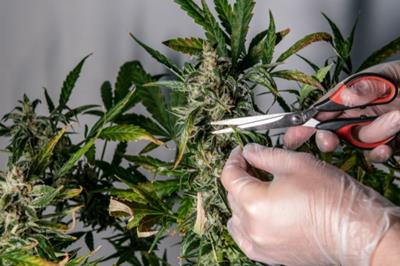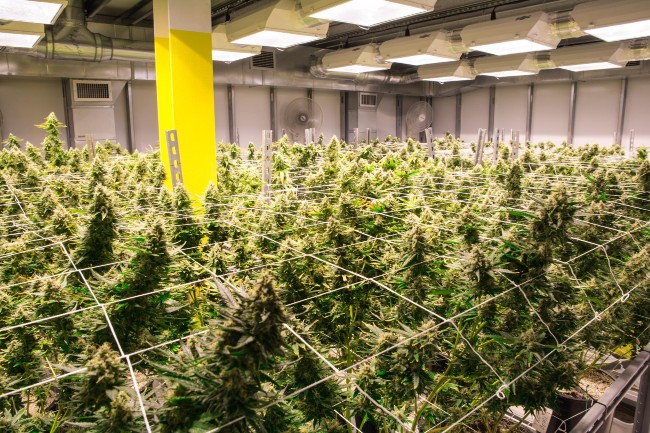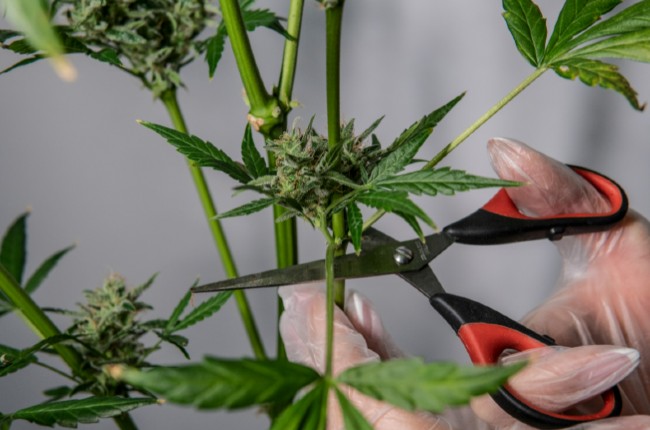
Friday December 17, 2021
 Growing
Growing
Cannabis lives up to its nickname “weed” in that it is very resilient and can grow just about anywhere. Quality cannabis, however, needs a bit more care. In addition to a precise nutritional regimen, a carefully controlled living environment, and a pest-free home, high-yield cannabis plants must also be manicured to meet their full potential. The process called pruning is essential for optimum health and high out-put as long as it’s done correctly.
What is Pruning?
Pruning is the controlled removal of dead or non-beneficial plant growth. Pruning cannabis not only involves the removal of dead and dying foliage but also the branches and leaves that may impede vigorous growth. For example, one might prune back small branches to increase light penetration and airflow to other, larger branches; or might remove large, healthy branches to encourage new growth and bushier plants.
Pruning vs. Training Marijuana Plants
Training and pruning are very similar. Both involve manipulating the plant to produce more flowers and higher cannabinoid levels in a smaller space. However, unlike pruning, training does not require damaging the plant.
Instead, cannabis training methods like ScrOG to guide the growth of stems and branches. “Super Cropping” or bending branches instead of removing them, is another form of non-destructive training. Training is ideal for young plants that are not yet healthy enough for a prune.

Conversely, pruning refers to the physical removal of branches and leaves, and is therefore more stress-inducing if not done properly. Pruning also leaves plants vulnerable to infection highlighting the importance of sanitary tools and proper pruning practices.
Pruning is only recommended for plants that are large and strong enough to withstand the trauma — at least two weeks into vegetative growth and no later than three to four weeks into flowering. Avoid pruning after plants begin to flower as this could encourage the plant to stop flowering in lieu of more vegetative growth.
Why Prune Cannabis
The goal of pruning is to increase yield. However, there are many reasons one might prune their cannabis plants including size control (which is especially important for indoor grows), improved light penetration, and increased cannabinoid concentration. For example, an indoor grower may need to prune plants to keep them from burning against grow lights.
Furthermore, pruning lower or smaller branches deep within the plant can increase the amount of light lower, larger nodes receive. Finally, pruning is a form of controlled stress that can increase cannabinoid and terpene production as a sort of evolutionary defense mechanism.
How to Prune Cannabis for Optimum Output
Before beginning the pruning process, ensure that all tools are clean and sanitary. Neglecting this step sets plants up for infection and hinders your chance of success. Sanitize manicure scissors for fine trimming and large scissors for large branches, and wear latex gloves to protect your plants from contaminants and help speed recovery.
When plants are at least a month old (though not after three to four weeks into the flower cycle), you can begin pruning them.

Start by removing large branches from the bottom of the plant. These branches, though large, do not receive enough light to produce buds; removing them encourages the growth of more viable branches. Next, remove branches deep within the plant for the same reason.
Next, trim away any small branches or dying leaves and dispose of them accordingly (leaving branches and leaves to rot encourages infection). Over the next few weeks, you should witness a burst of growth thanks to the increased light exposure and refocused plant growth.
Conclusion
Cannabis plants are resilient. No matter what life throws at them, they want to survive. When branches are pruned, their evolutionary makeup kicks in to promote new, vigorous growth, along healthy branches and nodes. Therefore, when done correctly, pruning can increase cannabis plant output and while controlling its growth patterns.
Frequently Asked Questions
Do You Need to Prune Cannabis Plants?
You do not technically need to prune or trim your cannabis plants as they grow, but doing so can help improve quality and yield.
When Should You Prune Cannabis?
You’ll want to let the plants develop a bit before pruning. Pruning can stress the plant, and as such it’s recommended to allow the plants to grow large enough to have some resilience first — at least two weeks into vegetative growth and no later than three to four weeks into flowering is ideal.
Why Is It Important to Prune Cannabis?
Pruning cannabis plants allows them to focus their energy on growth and cannabinoid production. It can also help the plants grow by allowing more light to reach the branches, thus providing the plant with more energy to distribute.
Do you have tips for pruning cannabis? We’d love to hear ‘em.
Photo Credit: VasilevKirill (license)







